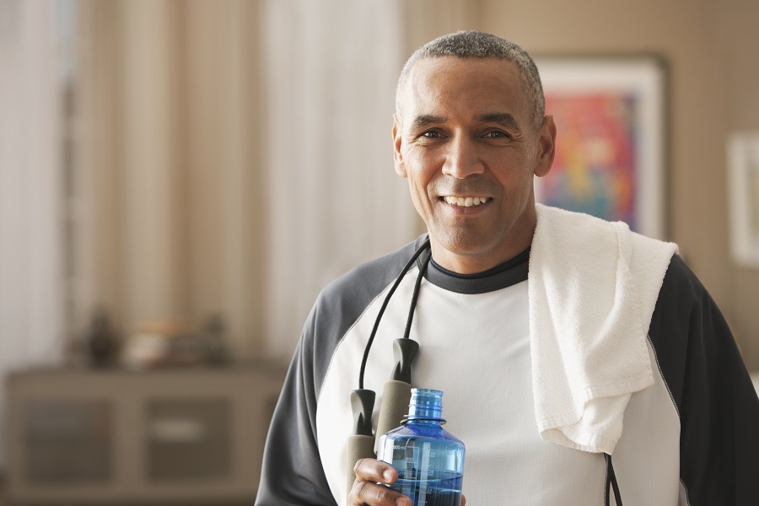Freedom from urinary incontinence and overactive bladder
Aug 31, 2020

The concept of leaking urine is not new and has caused significant frustration, embarrassment and even fear for millions of people suffering from this condition. Unfortunately, this problem is suffered by women to a significantly greater extent than men. This is largely because of childbirth and differences in anatomy. Fortunately, in most cases, there are things that can be done to significantly improve and even correct the problem.
To address the condition of urinary incontinence (UI), I will outline the types of incontinence and testing that are available to assess this wide-scaled problem and preview solutions that range from simple changes in behavior to mediations and or surgery as appropriate.
First, with urinary incontinence it is important to note you are not alone – The problem is significant as UI affects the lives of at least 25% of women over the age of 18. In resolving UI, simple treatments, various medications and surgical procedures are most often prescribed or performed for our patients in our offices and facilities.
Here are some conservative estimates of the scope of the problem of urinary incontinence and overactive bladder from the National Association for Continence:
- About 17% of women over 18 years of age have overactive bladder (OAB) and an estimated 12.2 million adults have urge incontinence.
- One in five adults over 40 are affected by OAB or symptoms of urgency and frequency.
- OAB and UI occur about twice as frequently in women as in men and become more prevalent with age.
- An estimated 17 million adults in the U.S. have daily UI. An additional 33 million suffer from OAB.
- About 37% of women between the ages of 20 and 45, suffer from OAB.
- Stress urinary incontinence, the most prevalent form of incontinence among women, affects an estimated 15 million adult women in the U.S.
- 29% of individuals ages 60-70 experience leakage when coughing, sneezing, or laughing compared to 17% of men and women aged 30-39. Some of these individuals also experience urge incontinence.
- Approximately, 1 out of 3 women over the age of 45, and 1 out of 2 women over 65 have stress urinary incontinence.
- In 2010, 211,000 women had some type of surgery for stress urinary incontinence.
Types of Urinary Incontinence
- Urge incontinence occurs largely without significant warning. A patient with urge incontinence will feel the desire to void and almost immediately begin to leak urine. She simply may not have the ability to get to the bathroom (or get a car to the side of the road when driving) before losing urine.
- Overflow incontinence is often considered part of urge incontinence and commonly related to loss of sensation of the need to void. This is related to falling of pelvic organs like the bladder and uterus. The urethra, which is the tube from the bladder where the urine flows, is often kinked like a garden hose and causes the bladder to empty poorly. This can also lead to frequent urinary tract infections. Over time, the sensation to void is reduced and the muscles of the bladder wall become injured leading to more relaxation and worsening of symptoms. Ultimately, the body and mind no longer sense the need to void until it is too late. A large loss of urine is often experienced as the muscles of the bladder wall start to spasm or contract. This type of incontinence can often be treated by medication or a pessary (a donut-shaped silicone device) placed as support in the vagina. Surgery alone rarely has a direct role but may indirectly play a role. Unfortunately, current medications and treatments are not robust enough to resolve this condition and come with many side effects. New classes of medicines have shown some promise.
- Stress incontinence – What do laughing, coughing, sneezing, lifting a weight or performing exercise have in common? They often cause a woman to leak small amounts of urine. This is the most common type of urinary loss. This affects upwards of 20% of women (usually 4-8 times greater than in men). This condition is often the most embarrassing kind incontinence in that often it just pops out at the most inopportune times, for example at social gatherings of any type.
- Mixed Incontinence – This is quite common as the injury to the pelvic floor from childbirth and the prolapse that happens will commonly lead to both stress and overactive bladder. This is roughly 60-70% of all urinary incontinence and as might be expected shows a mixed response to treatments. Treatments are multifocal and have differing levels of duration of expected cure or improvement. Studies such as multichannel urodynamics can help discern which component of incontinence is most prevalent and assist in choosing appropriate treatments.
Risk Factors
Risk factors for stress incontinence include parity or how many babies you may have delivered. Vaginal deliveries are thought to be a greater contributor than Cesarean Section births towards those risk of incontinence and OAB. The baby’s size and weight, the patient’s adverse health conditions (diabetes, obesity, hypertension) and menopausal status all can be contributing factors. However, stress incontinence can affect even those without prior pregnancies.
Treatments
Treatments are usually very successful for stress incontinence but should start with weight loss and exercise. Biofeedback-based treatments often with Kegel exercises to strengthen the pelvis and sometimes physical therapy for the pelvic floor have had varying degrees of success depending on how advanced the problem has become. Pilates and core strengthening exercises and regimens can also help improve or maintain the status quo or prevent the need for surgery. Medications have a far less defined role here, compared to urge incontinence.
Surgery is the mainstay “cure” for this common type of female incontinence. The procedures are multiple and there is a great deal of data supporting the procedures’ efficacy and safety of surgical options. Bladder or more clearly urethral “sling” procedures have been performed to support the all too mobile urethra. There are multiple different procedures developed over the years earlier with mixed results and generally improved success rates and duration over time.
About 20 years ago, there was a great improvement in successful outcomes and ease of the procedure with the advent of trans vaginal tape (TVT) procedures (1996) and transobturator tape (TOT) procedures (2001) based on the premise and promise of mid urethralslings. These procedures are effective, simple and rapid, and usually done in outpatient surgical settings in 10-20 minutes with discharge home the same day.
What to do now?
Do not suffer alone. There are multiple treatment options that have proven highly effective in improving or correcting urinary incontinence. If UI is affecting your life or that or a loved one, please reach out and schedule an appointment to assess your options for living a better life. We offer both in-person and virtual visits for your safety and convenience.
Cheers to dry days ahead!

1100 Trancas Street, Suite 250 | Napa
707-253-1135
821 South St. Helena Highway, Suite 1 | St. Helena
707-967-7550


